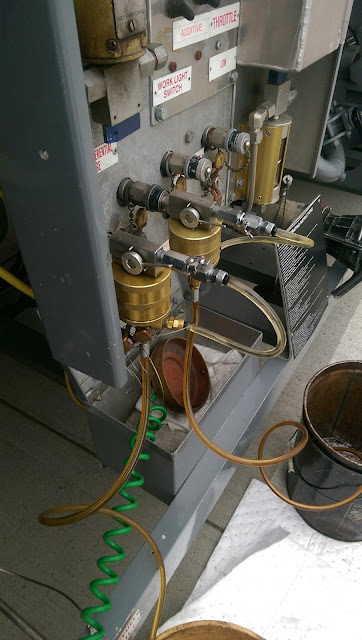This last week at the airport we conducted a series of fuel tests for our fueling trucks. The kit we used had small white test disks with a very fine membrane to them, these were placed in a container that had ports on either side to allow the fuel to travel through them and saturate the disk. A total of one gallon must be passed through the test disk on the inlet and outlet side of the pump. These samples were then compared to a chart to show the quality of the fuel in addition to detecting any water in the system or bacteria growth. However, as the trucks were due for new filters I was able to see first hand the potential damage that bacteria growth can do to a system. The first step to draining the housing that contained the filters is to check for any water build up in the bottom of the housing by simply cracking the valve for a few seconds and then shutting it off to inspect the quality of the fuel. After this, the fuel must be completely drained from the housing so that we we could remove the filters. This was no easy task, because of regulations at the airport we could not bring the fuel trucks to our shop on the other end of the airport. Instead we had to drain them on the designated concrete slab where they are stored in between re-fueling aircraft. One of the trucks so happened to be contaminated and required cleaning of the system as well as treating the tank with a Microbicide.
Product used
Test disks contained in these
Fuel after passing through test
Full set up, inlet is closest to me and outlet is farther away
Fuel filter housing,
Cleaning out the housing with lint free rags
Beautiful life forms found
Bacteria!!
Hours this week: 30
Running total: 155.25













Interesting. We'll want to discuss this in the fall engines class. Please remind me.
ReplyDelete